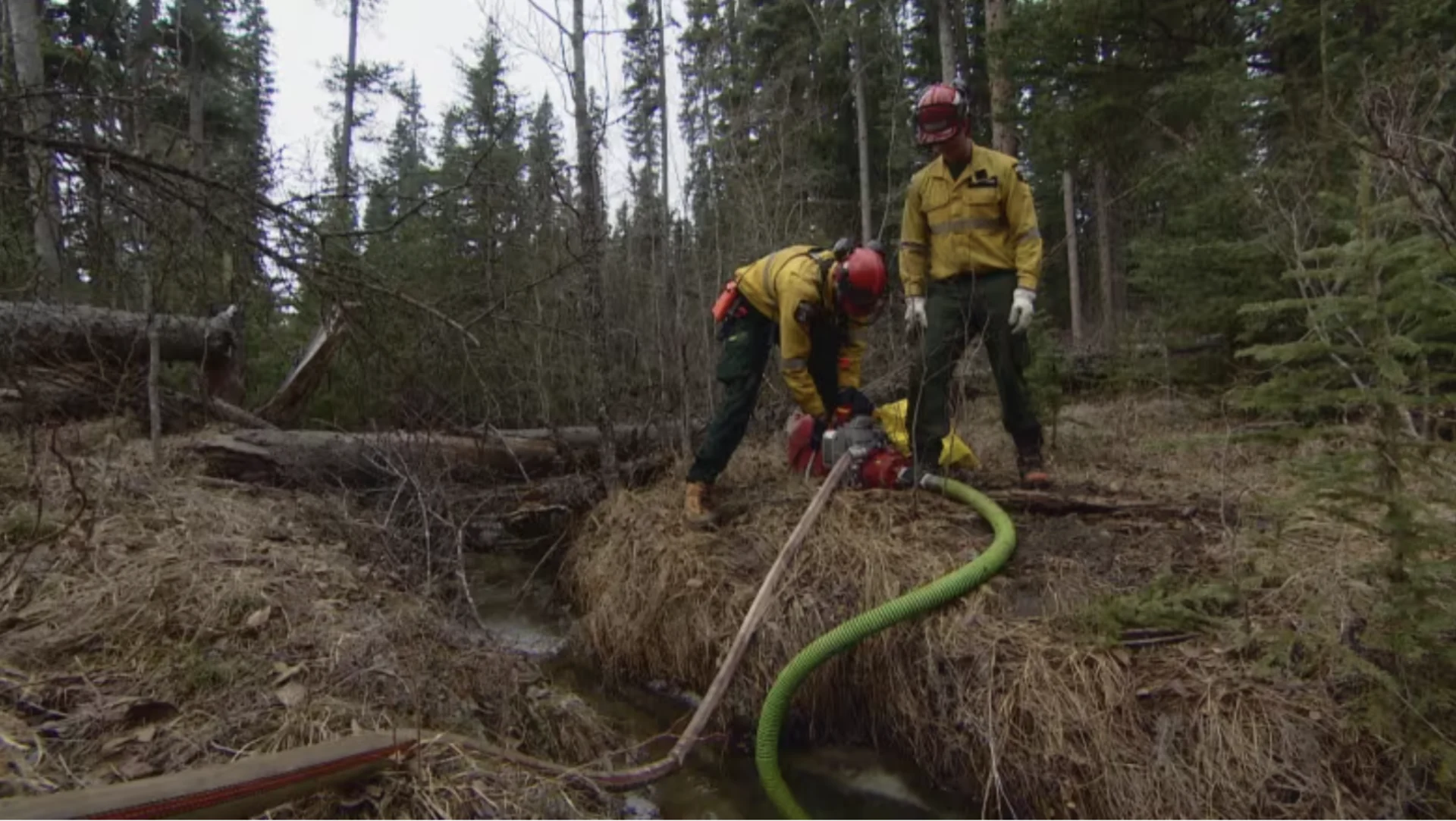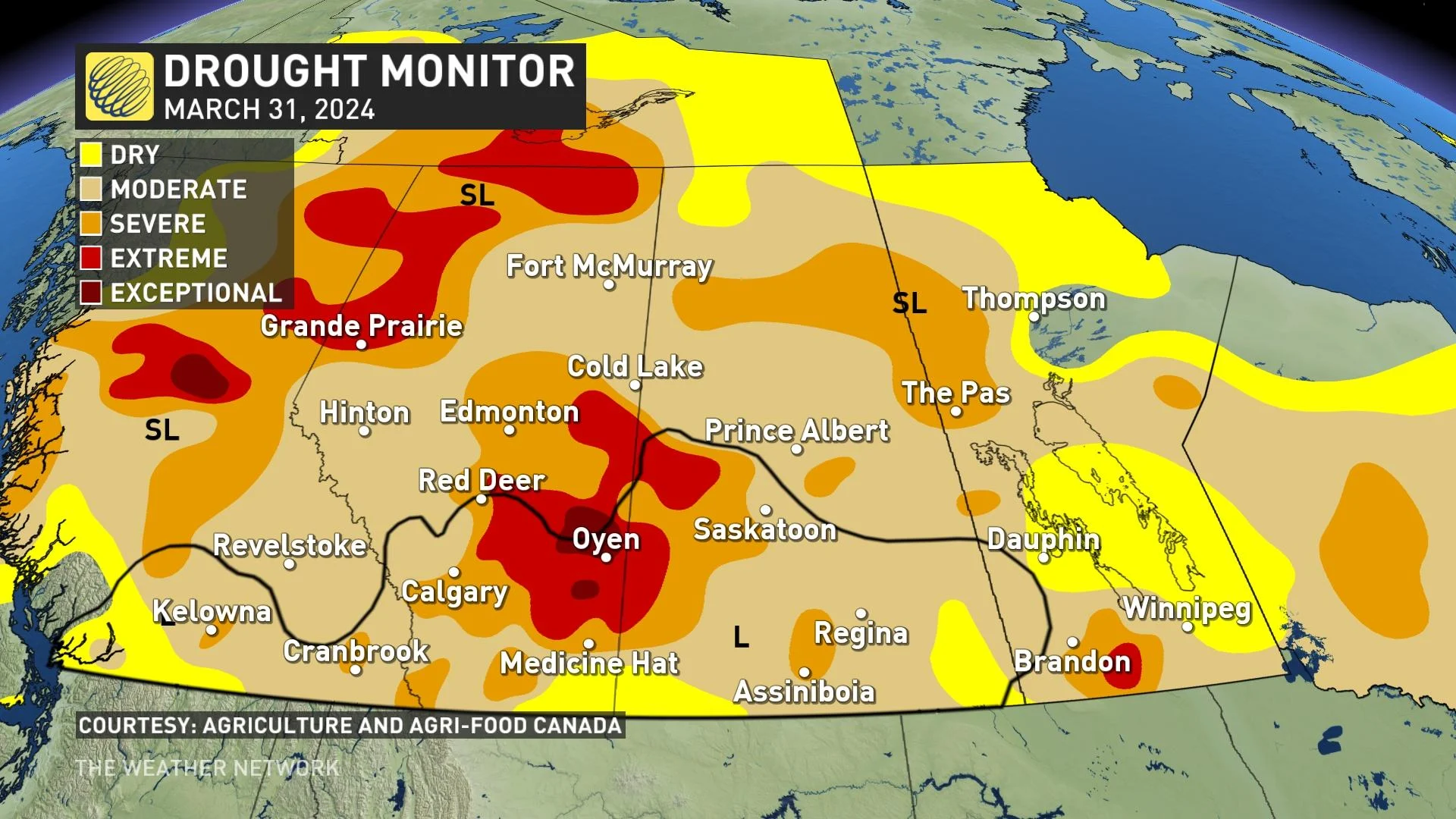
Frozen water and dry conditions a concern for central Alberta firefighting dept.
Alberta firefighters are bracing for another destructive wildfire season as still-frozen bodies of water present their own obstacle to firefighting.
John Kokotilo, regional fire chief and manager of emergency management for Lac La Biche County, said Tuesday that aircraft in the area would face difficulty sourcing water if a large fire were to erupt now.
"If we can get at them very quickly, which we have been luckily, so far, we can usually mitigate them at the head and get them under control," he said.
"But a large event may prove to be not so good."
RELATED: Alberta's wildfire season: how 500 new firefighters are preparing for it
It's a situation made more concerning as dry conditions and drought persist throughout Alberta, raising the risk of sparks quickly turning to flames.
Kokotilo said in an interview with CBC's Edmonton AM on Tuesday that fires have already been picking up.
"Any spark right now, we've got a lot of dry grass in the area that could prove very, very, extremely hazardous," Kokotilo said.
He said precipitation is sorely needed — and fire safety vigilance from residents — or Alberta may face "an unprecedented season this year."
A fire advisory is currently in place for the Lac La Biche forest area, meaning new fire permits will not be issued for non-essential heavy fuel burning. Permits are being issued on a case by case basis.

Drought conditions as of March 31, 2024. "SL" represents short-term drought, typically less than 6 months (e.g., agriculture, grasslands). "L" represents the region of a long-term drought over 6 months (e.g., hydrology, ecology). (Source: Agriculture and Agri-Food Canada)
CANADA'S WILDFIRES: Visit The Weather Network's wildfire hub to keep up with the latest on the active start to wildfire season across Canada.
Around 500 kilometres west, firefighters in the Grande Prairie region have also been busy battling the elements.
Grande Prairie Fire Service Deputy Fire Chief Jason Nesbitt said Monday that the department had answered half a dozen calls for service this last weekend, including to bush parties and an instance where a child was playing with a lighter.
"Even those things in the dry weather pick up this time of year," he said.
The county department has been called to 30 brush fires since March 30, the largest being 82 hectares.
WATCH: Firefighters train for busy wildfire season as drought conditions persist
Nesbitt said there's severe drought in the region and a high fire rating. One concern is when there's crossover — when the relative humidity drops below the temperature.
"And when the winds pick up, it makes it very, very easy for brush fires to ignite."
Nesbitt said last year's historic wildfire season was a significant challenge, one the department has taken lessons from.
Call stations are currently staffed on high hazard days, eliminating the travel time for firefighters to the station. A helicopter is being brought on with bucketing capabilities while a drone is used to go over areas from last year to check hotspots.
Raising awareness and offering prevention tips for the public is also part of the effort, he said.
"Just because you're 15 minutes away from a Costco if you live out in the forest area doesn't mean that your house is not susceptible to a wildfire," Nesbitt said.
Fire restrictions and bans blanket much of northwestern Alberta, including the County of Grande Prairie. The fire danger index is high or very high for the majority of the region.
Areas surrounding Edmonton in Central Alberta have also put in fire bans and restrictions.
There are currently 52 wildfires burning in the province, although none are rated as out of control. The provincial government declared an early start to wildfire season in February.
WATCH: Firefighters recruits focus on mental health ahead of wildfire season
This article was originally published for CBC News. Contains files from Edmonton AM. Header image courtesy of Peter Evans/CBC.









